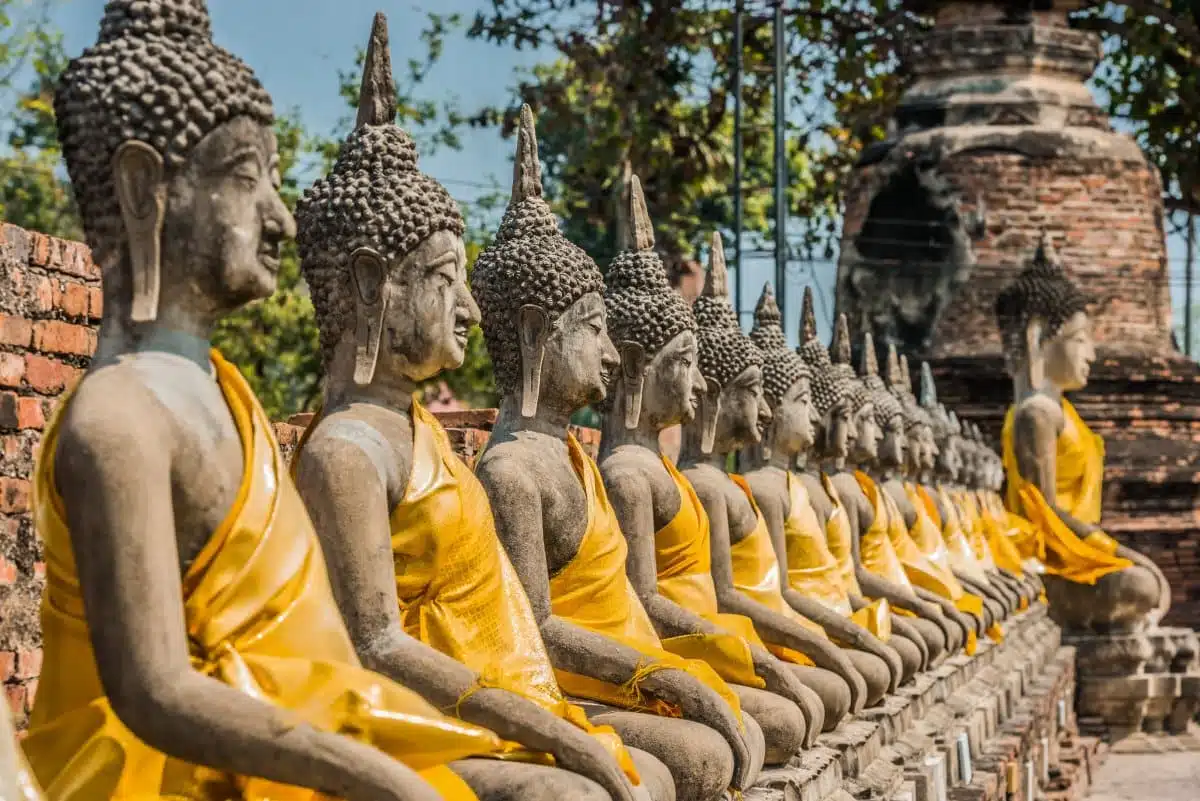Traveler Profile
Katie, UK
Location
Ayutthaya, Thailand
Time of Year
February
Travel Goals
Magic, history, adventure, photography, and luxury.
Traveling with a group of friends, we flew into Don Mueang International Airport on an [very] early flight from Koh Samui and decided to take advantage of the airport’s proximity to Ayutthaya. Our guide and driver picked us up on time, and we headed off to explore. We grabbed a takeaway breakfast of Khao Tom (rice porridge) and Jok (rice congee), which offered a taste of local flavors, setting the tone for the day’s exciting cultural experience.
Ayutthaya, the ancient capital of Siam, is a city steeped in history and culture, just a short journey from Bangkok. This UNESCO World Heritage site offers a glimpse into Thailand’s past through its magnificent ruins and temples. Spending a day here takes you back amidst the ancient architectural feats and serene landscapes that define this historic city.
The Royal Summer Palace (Bang Pa-In)
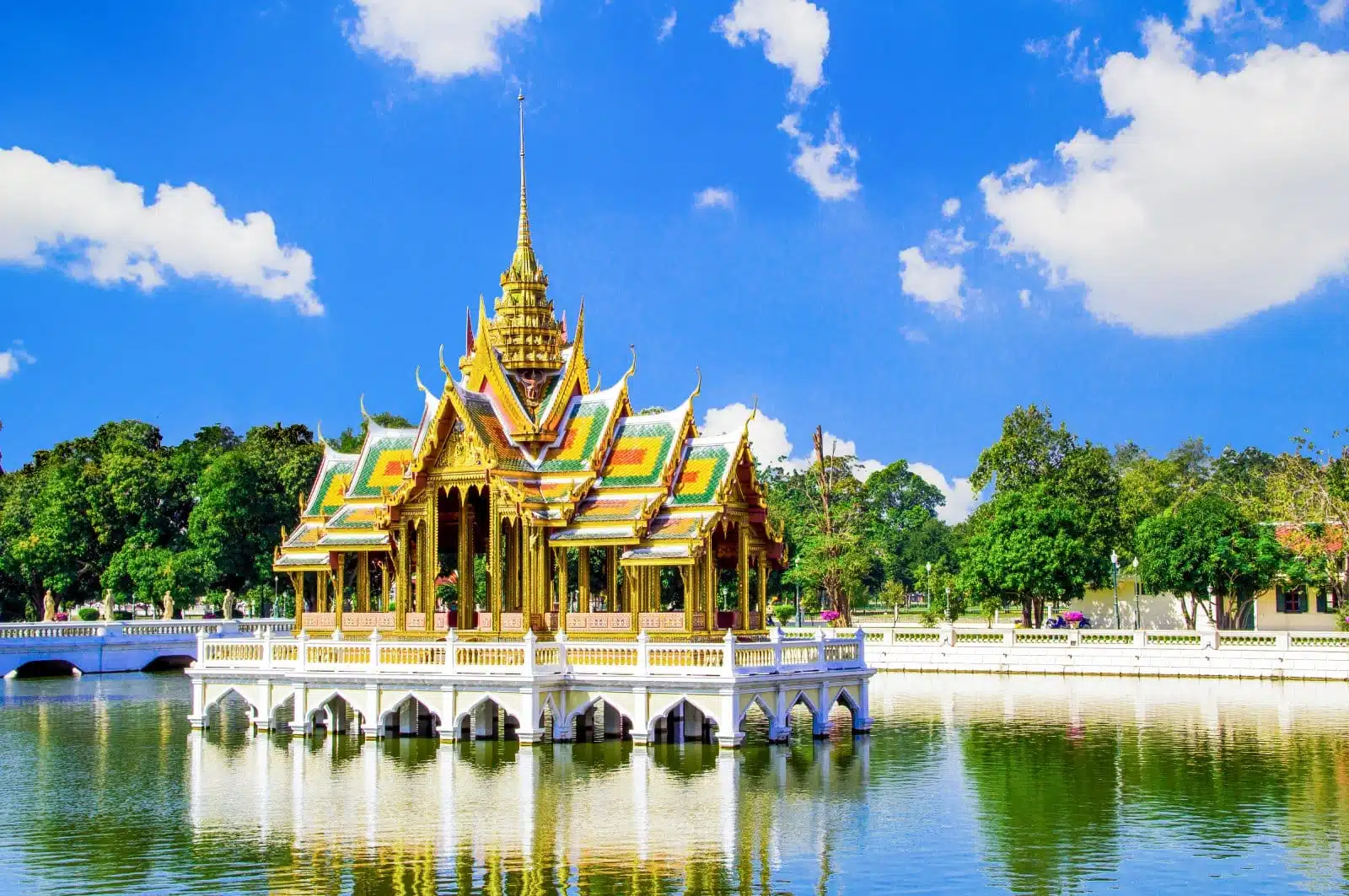
Image Credit: Shutterstock / AofLine
The Royal Summer Palace, Bang Pa-In, celebrates the architectural and cultural synthesis that characterizes much of Thailand’s royal heritage. This expansive complex originated in the 17th century. It was meticulously restored and expanded by King Chulalongkorn (Rama V) in the late 19th century, reflecting a significant transformation within the Thai monarchy and society. The palace’s architecture is a fusion of Thai, Chinese, and Gothic influences, showcasing the global outlook of the Thai royal court during this era.
The complex is composed of numerous buildings, pavilions, and gardens, each with its unique design and purpose. Among these, the Aisawan Thiphya-Art Pavilion is particularly noteworthy, a Thai-style pavilion in the middle of a pond. Its traditional Thai architectural features, set against the backdrop of meticulously landscaped gardens, offer a picturesque setting that captivates visitors. Conversely, the Wehart Chamrun, a two-story Chinese-style mansion, exemplifies the influence of Chinese culture on Thai royalty, adorned with intricate decorations and housing a collection of Chinese antiques.
The gardens of Bang Pa-In are equally significant, blending natural beauty with architectural finesse. These gardens serve as a tranquil escape and reflect the Thai monarchy’s appreciation for nature and landscape design, incorporating native and imported plant species.
King Chulalongkorn’s restoration of Bang Pa-In was part of a broader effort to modernize Thailand while preserving its cultural identity. His travels and interest in Western and other Asian cultures influenced the eclectic architectural styles within the palace complex, symbolizing Thailand’s openness to external influences and its ability to integrate these into its unique cultural expression.
Today, Bang Pa-In remains a functional retreat for the Thai monarchy and a significant cultural attraction for visitors. Its preservation and continued use underscore the enduring relevance of Thailand’s royal heritage and its role in shaping the country’s cultural landscape. The Royal Summer Palace not only offers a glimpse into the opulence and aesthetic sensibilities of Thailand’s past monarchs but also serves as a reminder of the country’s rich historical tapestry and its ongoing dialogue between tradition and modernity.
My Insider’s Tip
The highlight is the Aisawan Thiphya-Art Pavilion, an elegant teakwood pavilion set in the middle of a pond.
Wat Mahathat
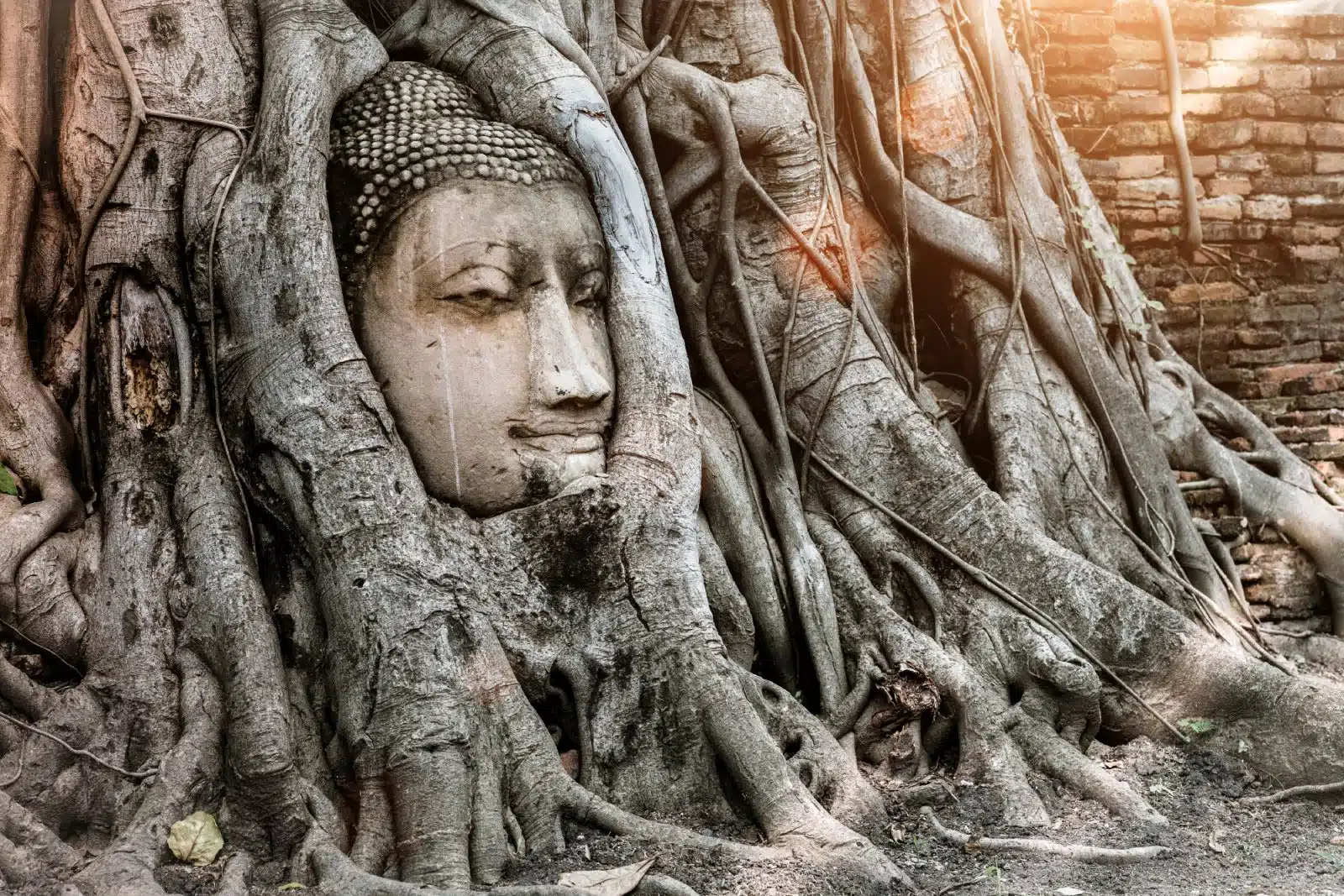
Image Credit: Shutterstock / iPhoto-Thailand
Wat Mahathat is a significant historical site within Ayutthaya, reflecting the city’s prominence as a spiritual and political center in the 14th century. This temple, renowned for its Buddha head entangled in the roots of a Bodhi tree, symbolizes the enduring presence of spirituality amid the ruins. Originally established as a pivotal center for Buddhist education, Wat Mahathat’s architecture and remnants mirror Ayutthaya’s grandeur and eventual decline.
The temple’s iconic Buddha head, entangled by tree roots, is believed to date back to the destruction of Ayutthaya by the Burmese in 1767, which led to the temple’s abandonment. This image has since emerged as a poignant emblem of the site, illustrating the natural world’s reclaiming of human-made structures and the persistent influence of Buddhism despite historical upheavals. This phenomenon, representing the complex interplay between nature and spirituality, has drawn attention from both visitors and scholars.
Beyond its religious significance, Wat Mahathat was also vital for scholarly pursuit. It played a key role in spreading Theravada Buddhism across the Siamese kingdom and served as a hub for studying Buddhist scriptures, attracting monks and scholars from various regions to study and meditate.
Wat Mahathat’s ruins offer insight into Ayutthaya’s historical narrative, from its peak as a major center of trade and religion to its decline following the Burmese invasion. The site’s archaeological and conservation efforts highlight the global importance of preserving such cultural heritage. Visitors are thus reminded of the temple’s historical and spiritual significance, underscoring the importance of respectful engagement with the site.
My Insider’s Tip
It’s important to be respectful, so wear long trousers and a shirt or shawl that covers your shoulders.
Lunch at Sala Ayutthaya Eatery and Bar
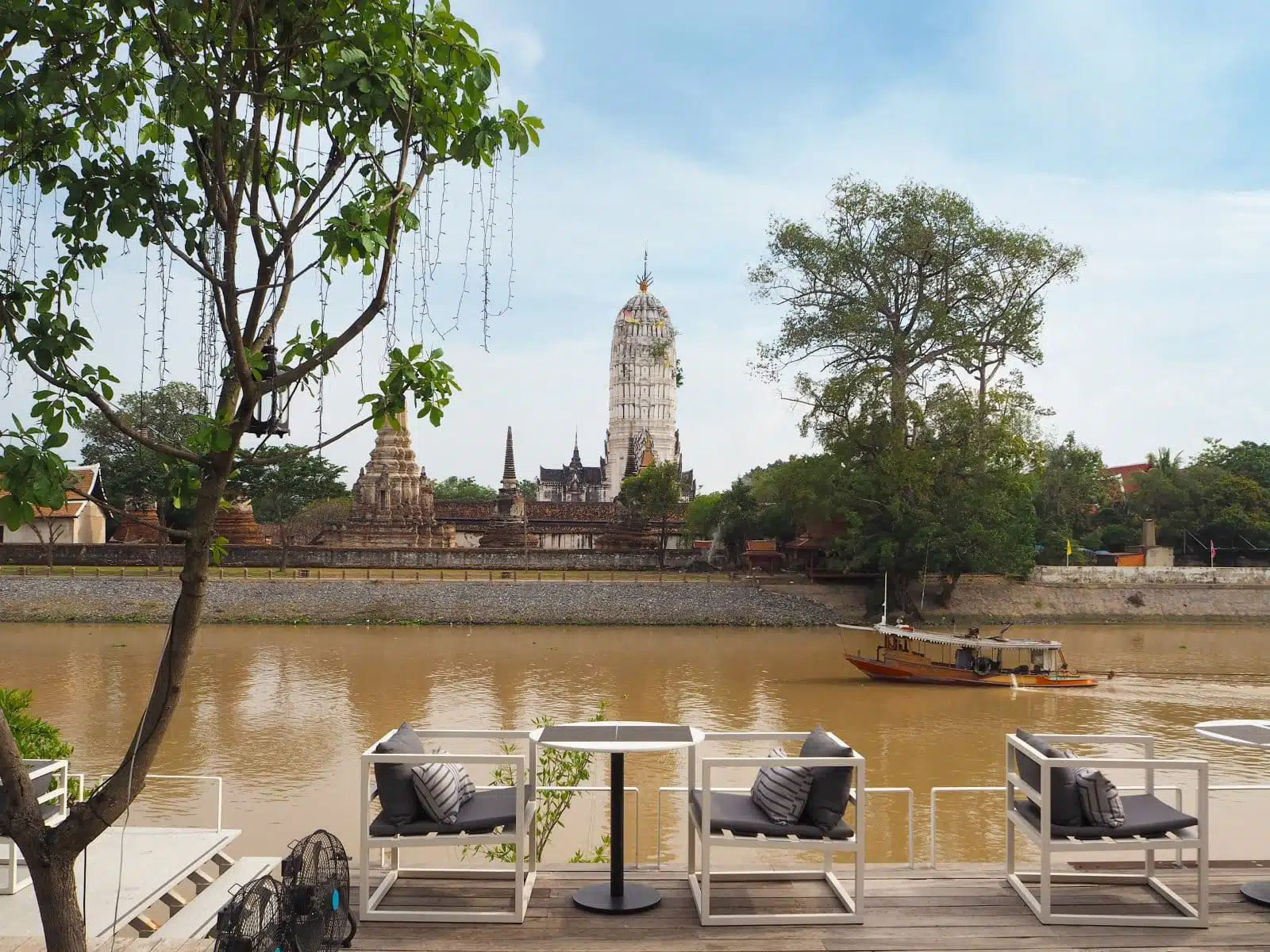
Image Credit: Shutterstock / Mongkolp
Lunch at Sala Ayutthaya Eatery and Bar provides a modern dining experience set against the historical backdrop of Wat Phutthaisawan. The restaurant specializes in Thai fusion cuisine, offering a contemporary take on traditional Thai flavors. The setting combines minimalist decor with views of the ancient temple, creating a contrast between the new and the old. The menu emphasizes using fresh, local ingredients, with river prawn dishes standing out as a highlight due to their freshness and quality.
Insider’s Tip
Beyond the recommended river prawn dishes, inquire about seasonal offerings that feature local produce. These dishes can offer a unique taste of the region’s seasonal best, enhancing the dining experience. The restaurant’s approach to combining traditional Thai flavors with modern culinary techniques makes it a noteworthy stop for those exploring Ayutthaya.
Wat Ratchaburana and Wat Phra Si Sanphet
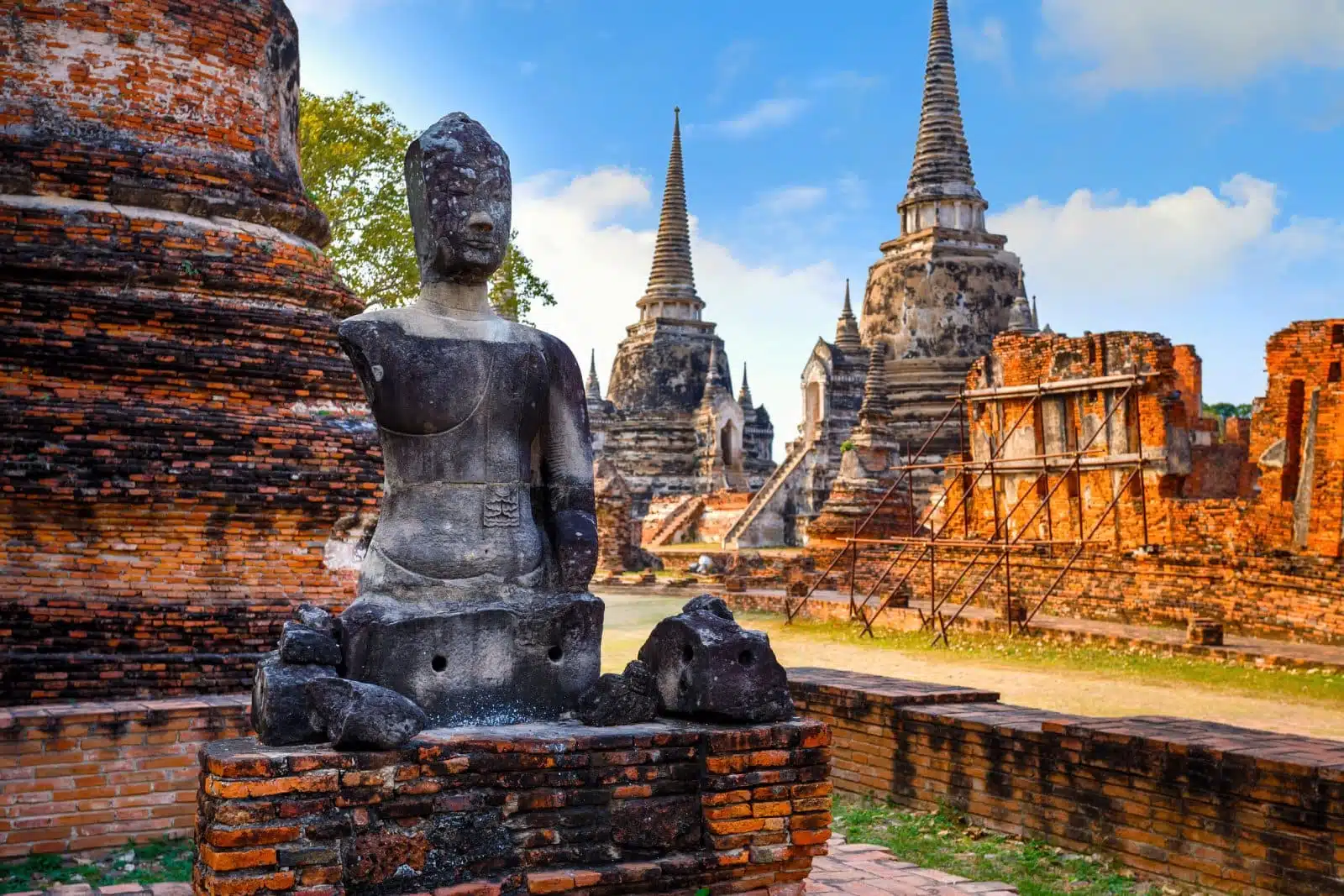
Image Credit: Shutterstock / cowardlion
Wat Ratchaburana and Wat Phra Si Sanphet represent Ayutthaya’s most significant historical and architectural landmarks, each telling a unique part of the city’s storied past. Wat Ratchaburana, established in the 15th century following a royal conflict, is renowned for its exceptional preservation and insights into the period’s Buddhist art. The temple’s central prang, a striking example of Ayutthaya’s architectural feat, stands tall, inviting visitors to explore its crypts. These underground chambers house an array of unique frescoes and relics, providing a tangible connection to the temple’s rich history.
Adjacent to Wat Ratchaburana, Wat Phra Si Sanphet served a pivotal role within the royal palace complex, distinguishing itself with three imposing chedis. These iconic structures, visible from various points within the city, once contained the ashes of Ayutthaya’s kings, symbolizing the city’s spiritual and political significance. Unlike other temples in Ayutthaya, Wat Phra Si Sanphet was exclusively used for royal ceremonies, adding to its historical importance.
Together, Wat Ratchaburana and Wat Phra Si Sanphet encapsulate the architectural innovation and spiritual depth of the city. Their proximity allows you to appreciate the contrast between the personal, intimate artistry of Wat Ratchaburana’s crypts and the grand, symbolic architecture of Wat Phra Si Sanphet’s chedis. This juxtaposition highlights the complexity of Ayutthaya’s history, from its artistic achievements to its royal ceremonies and the eventual decline that led to the city’s current state as a revered historical site.
My Insider’s Tip
While the towering prangs and chedis capture immediate attention, a visit to the crypts of Wat Ratchaburana should not be overlooked. Descending into these chambers offers a rare opportunity to witness the temple’s artistic heritage up close. The frescoes, though aged, tell stories of religious devotion and royal legacy, providing a deeper understanding of Ayutthaya’s cultural and spiritual life. You are encouraged to take their time exploring these less frequented parts of the temple, as they offer a quiet space for reflection away from the more crowded areas of the site.
Journey to Bangkok
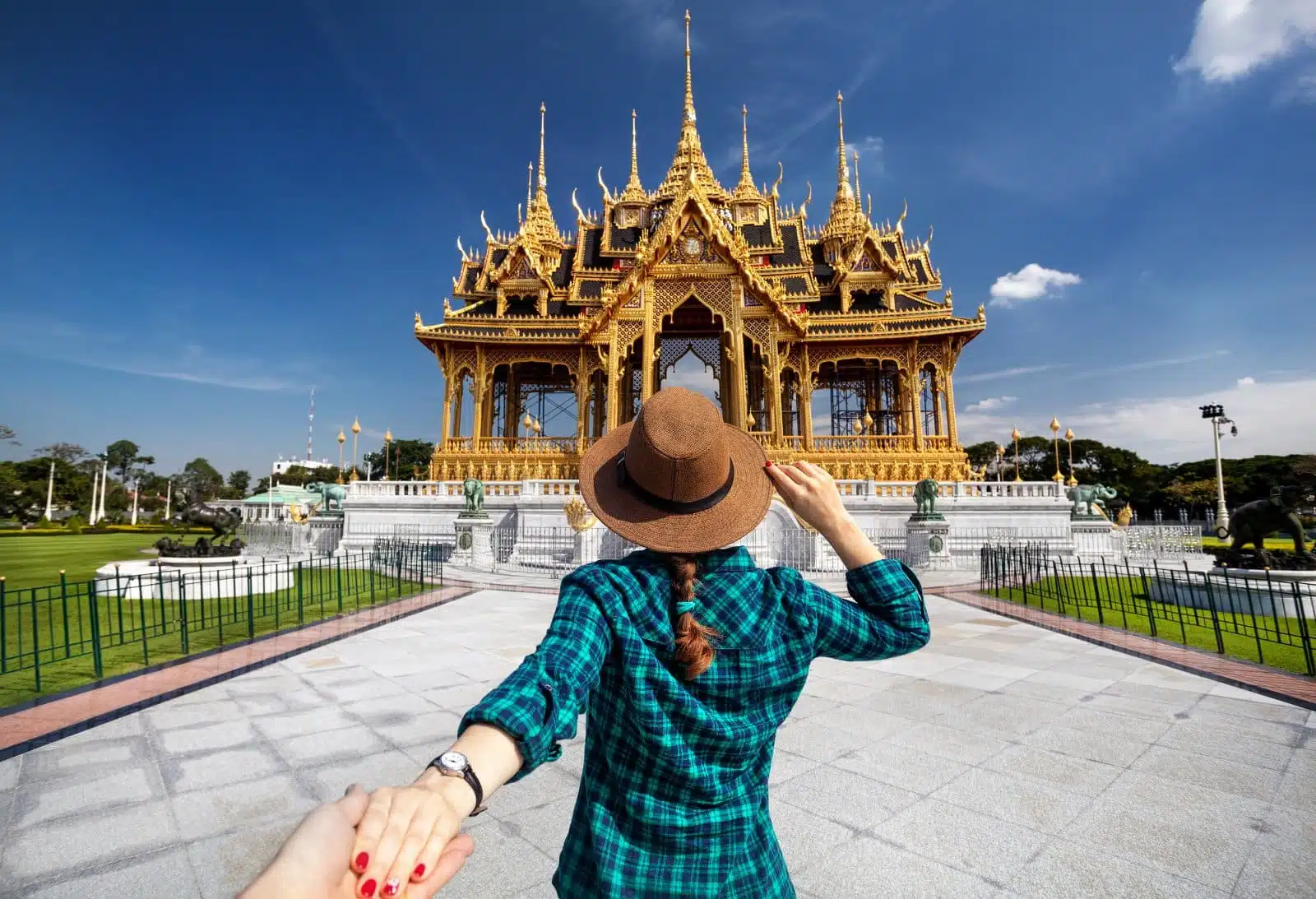
Image Credit: Shutterstock / Pikoso.kz
As the day wound down, we headed to Bangkok. The return trip offered us a moment to reflect on Ayutthaya’s historical and cultural richness, contrasting with the modern vibrancy of Thailand’s capital. We also slept!
Dinner and Overnight Accommodation at The Siam Hotel

Image credit: The Siam Bangkok
We ended our productive day at The Siam Hotel in Bangkok. It provides a modern contrast to our ancient exploration of Ayutthaya. This luxury riverside hotel blends Art Deco sophistication with Thai design elements, offering a refined and relaxing environment. The hotel’s restaurant served a diverse menu that combined traditional Thai flavors with contemporary techniques set against the beautiful and bustling backdrop of the Chao Phraya River.
The Siam Hotel is well-known for its attention to detail, from its architecture to its interior decor, incorporating historical and modern influences. Staying overnight allowed us to enjoy the hotel’s amenities, including art collections showcasing Thai culture and history. The rooms and suites at The Siam Hotel are designed for comfort and elegance, providing a peaceful retreat in the heart of Bangkok.
My Insider’s Tip
The hotel’s spa offers treatments based on traditional Thai healing practices. This experience can provide a relaxing end to the day, complementing the cultural journey. You could also choose to have a sank yank, a traditional Thai tattoo known for protection.
History of Ayutthaya
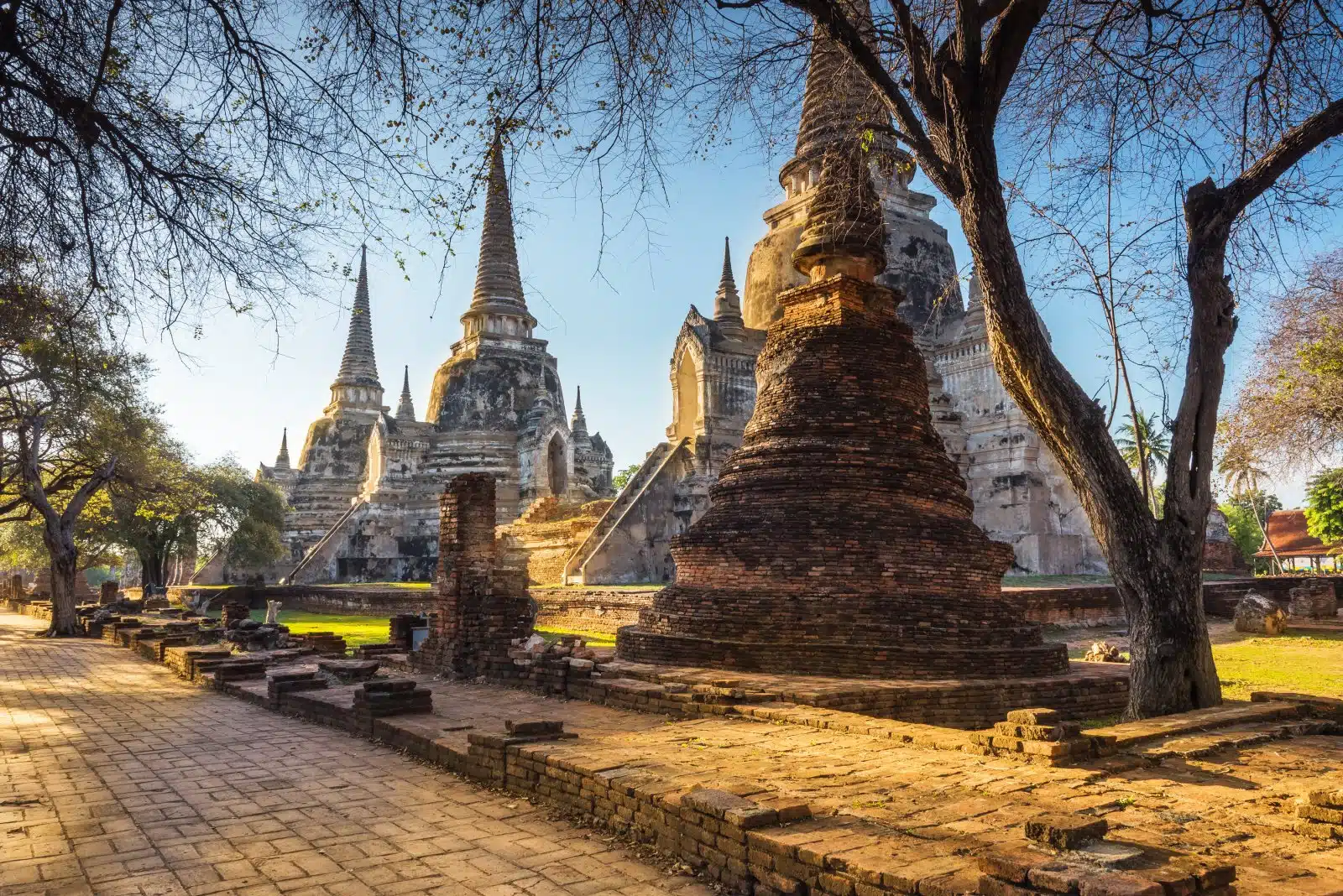
Image Credit: Shutterstock / FocusStocker
The history of Ayutthaya, officially known as Phra Nakhon Si Ayutthaya, began in 1350 when it was founded by King U-Thong, who moved the capital of his kingdom to this site from Lopburi in response to a threat of an outbreak of smallpox. On an island surrounded by three rivers connecting it to the sea, Ayutthaya was positioned to grow into a significant and prosperous trading post. Its location facilitated defense and trade, allowing the city to establish and maintain connections with various countries across Asia and Europe.
Over the next four centuries, Ayutthaya flourished, becoming one of the world’s largest urban areas by the 1700s, with a population of 1 million. The kingdom was known for its impressive architecture, including numerous palaces and over 400 temples, made possible by the wealth that flowed into the city from its trade in goods such as rice, ivory, and timber.
Ayutthaya’s prosperity made it a target for neighboring kingdoms and it endured several invasions over the centuries. The most devastating of these occurred in 1767 when the Burmese army sacked the city, leading to its destruction and the collapse of the Ayutthaya Kingdom. The capital was subsequently moved to Thonburi and later to Bangkok, marking the end of Ayutthaya’s era as the center of Thai power.
Despite its fall, Ayutthaya’s legacy endures through its ruins, declared a UNESCO World Heritage Site in 1991. Today, the historical park highlights the city’s former glory, attracting scholars and tourists alike who seek to understand this once-majestic city’s cultural and historical significance. Ayutthaya remains a key chapter in Thailand’s history, symbolizing both the success of Thai civilization in terms of cultural, economic, and architectural achievements and the vulnerabilities that led to its eventual decline.
When to Travel
The cooler months from November to February offer the most pleasant weather for exploring Ayutthaya’s outdoor sites.
How to Get There
Ayutthaya is easily accessible from Bangkok by train, bus, or boat, with the journey taking approximately 1 to 2 hours.
The Bottom Line
Your day in Ayutthaya offers an incredible journey through Thailand’s historical landscape, from the serene beauty of ancient temples to the grandeur of royal palaces. Let the experiences of Ayutthaya inspire a deeper appreciation for Thailand’s rich cultural heritage and the importance of preserving it for future generations. In embracing sustainable travel practices, you contribute to the protection of these invaluable sites, ensuring they continue to tell the stories of Thailand’s fascinating past. Don’t ride the elephants!
More From The Green Voyage
Top 10 Trending Travel Destinations 2024
6 Essential Banking Apps for International Travel – Managing Your Finances on the Go
Traveling With Kids – 10 Tips to Create Memorable Family Holidays
The post One Day in…Ayutthaya, Thailand first appeared on The Green Voyage.
Featured Image Credit: Shutterstock / OSTILL is Franck Camhi.
For transparency, this content was partly developed with AI assistance and carefully curated by an experienced editor to be informative and ensure accuracy.
Tips for Trip Success
Book Your Flight
Find an inexpensive flight by using Kayak, a favorite of ours because it regularly returns less expensive flight options from a variety of airlines.
Book Your Hotel or Special Accommodation
We are big fans of Booking.com. We like their review system and photos. If we want to see more reviews and additional booking options, we go to Expedia.
You Need Travel Insurance!
Good travel insurance means having total peace of mind. Travel insurance protects you when your medical insurance often will not and better than what you get from your credit card. It will provide comprehensive coverage should you need medical treatment or return to the United States, compensation for trip interruption, baggage loss, and other situations.Find the Perfect Insurance Plan for Your Trip
